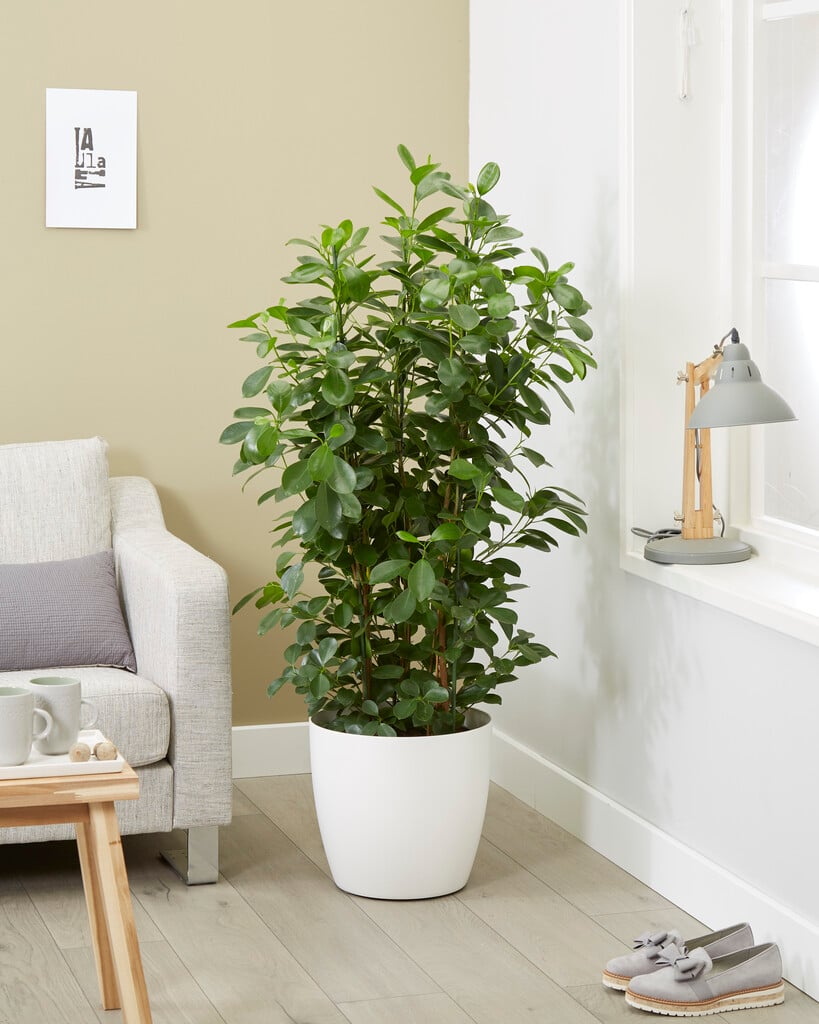Ficus microcarpa 'Moclame'PBR
curtain fig 'Moclame'
A tropical, evergreen tree, grown in temperate climates under glass or as a foliage houseplant for its upright, bushy appearance and leathery, lance-shaped leaves, 5-6cm (2-2½in) long in vibrant green. Capable of reaching 3m (10ft) in a container in cultivation. The plant resents being moved from a position it has become accustomed to and can respond by dropping its leaves.

Buy this plant
Size
Ultimate height
1.5–2.5 metresTime to ultimate height
10–20 yearsUltimate spread
1–1.5 metresGrowing conditions
Moisture
Moist but well–drained, Well–drainedpH
Acid, Alkaline, NeutralColour & scent
| Stem | Flower | Foliage | Fruit | |
| Spring | Green | |||
|---|---|---|---|---|
| Summer | Green | |||
| Autumn | Green | |||
| Winter | Green |
Position
- Full sun
- Partial shade
Aspect
South–facing or West–facing or East–facing
Exposure
Sheltered Hardiness
H1BBotanical details
- Family
- Moraceae
- Native to GB / Ireland
- No
- Foliage
- Evergreen
- Habit
- Bushy
- Potentially harmful
- Skin allergen. Wear gloves and other protective equipment when handling
- Genus
Ficus can be evergreen or deciduous trees, shrubs or climbers, with often leathery, simple, entire or lobed leaves and tiny flowers borne within a hollow receptacle which enlarges to form the fruit
- Name status
Accepted
How to grow
Cultivation
Grow under glass or as a houseplant in a peat-free, loam-based compost with added bark chippings, in full or filtered light. Water moderately and apply a high nitrogen fertiliser every four weeks during growth. Stop feeding and keep just moist over winter. See ornamental fig cultivation for more advice
Propagation
Propagate by air layering in spring or late summer
Suggested planting locations and garden types
- Houseplants
- Conservatory and greenhouse
Pruning
Pests
May be susceptible to glasshouse red spider mite, thrips, mealybugs and scale insects
Diseases
May be susceptible to honey fungus
Love gardening
Sign up to receive regular gardening tips, inspiration, offers and more
View our Privacy Policy
Get involved
The Royal Horticultural Society is the UK’s leading gardening charity. We aim to enrich everyone’s life through plants, and make the UK a greener and more beautiful place.